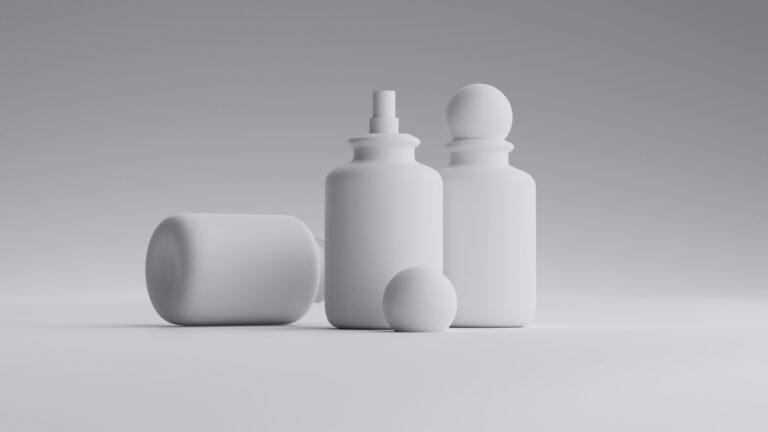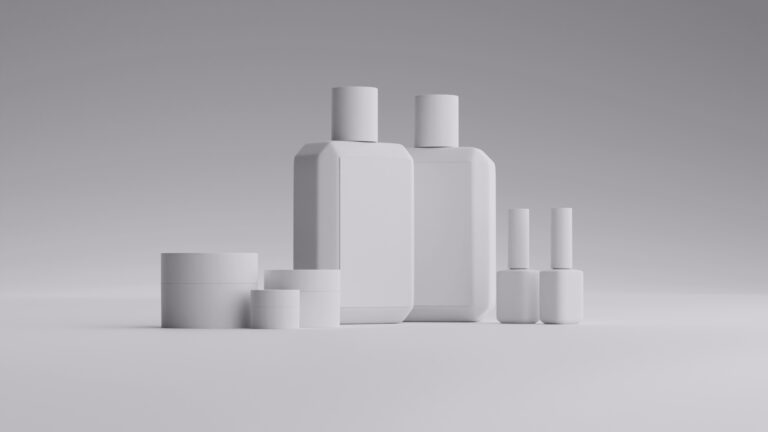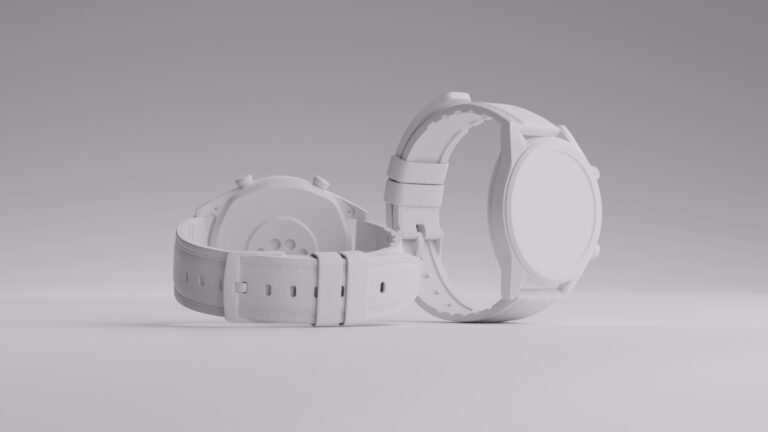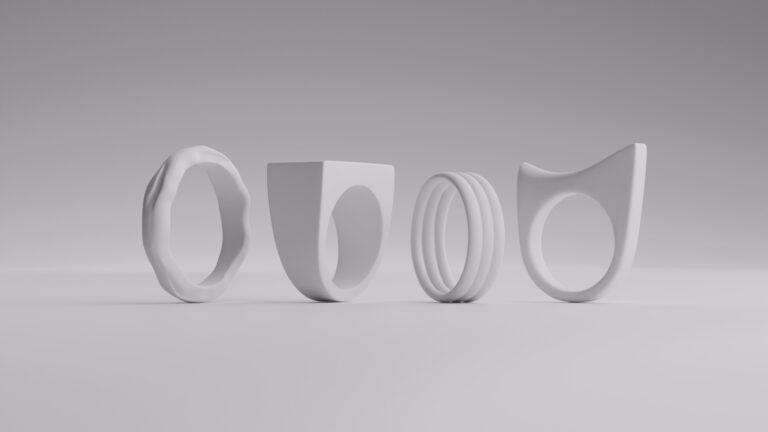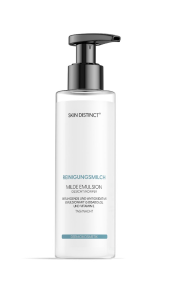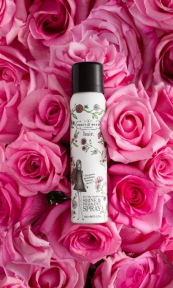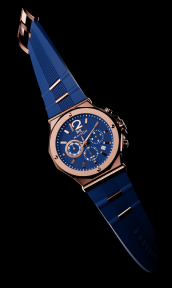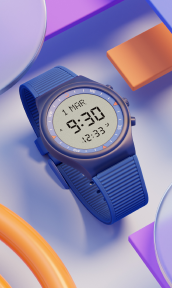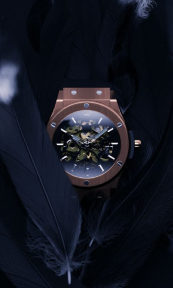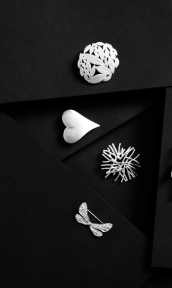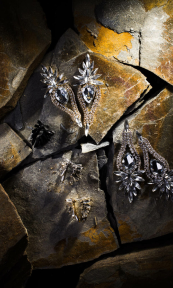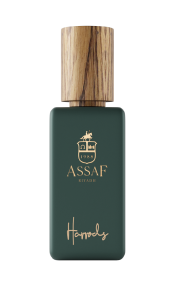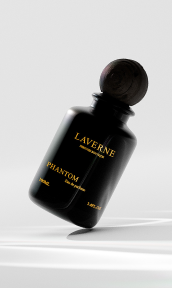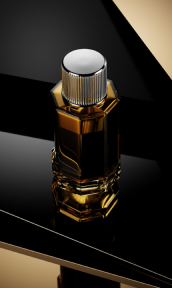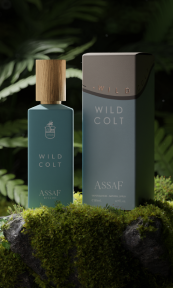In the competitive world of online retail, high-quality product photography is crucial for success. It’s the first impression your customers have of your products and can significantly influence their purchasing decisions.
For UK-based Shopify sellers, presenting your products in the best possible light is not just important, it’s essential. In this guide, we’ll delve into the key elements of successful Shopify product photography, from selecting the right equipment to setting up a dedicated photo shoot space. Additionally, we’ll explore the advantages of using CGI for product images, instead of doing it traditionally.
Important Elements for Success
High-quality product photography is indispensable for success in the competitive realm of online retail. To achieve this, certain elements must be incorporated into your product photos:
- Clear Focus: The image should be sharp, with the product clearly in focus. Blurry photos can make a product look unprofessional and unappealing. Ensuring clear focus highlights the details and quality of your product, instilling confidence in potential buyers. Focus on capturing the texture, materials, and craftsmanship of the product, which can be crucial for items like clothing, jewelry, or electronics.
- Proper Lighting: Good lighting ensures the product’s colors and details are accurately represented. Natural light is often the best option, but artificial lighting setups can also work well. Experiment with different lighting angles to highlight the product’s unique features, such as the gloss of a polished surface or the depth of a fabric’s weave.
- Appealing Composition: The product should be the star of the image. Use clean, clutter-free backgrounds and consider different angles to highlight key features. The rule of thirds can be a useful guideline for creating balanced and engaging images. Avoid busy or distracting backgrounds. Think about the story you want your image to tell – lifestyle shots showing the product in use can help customers visualize its benefits and practical applications.
By combining these elements, you can create high-quality product images that not only look professional but also enhance the shopping experience for customers, ultimately leading to higher sales and customer satisfaction. Consistency across your product images is key to maintaining a cohesive and professional UK online store. This consistency helps to build a strong brand identity and ensures that your customers know exactly what to expect when they receive their products.
Selecting the Right Photography Equipment

Investing in the right equipment can make a significant difference in your product photos. High-quality gear not only enhances the visual appeal of your images but also ensures that the details of your products are captured accurately. Here’s a detailed guide on what you’ll need:
Camera
While smartphones have advanced significantly, a DSLR or mirrorless camera can provide superior image quality. Look for cameras with at least 20 megapixels to ensure detailed, high-quality images that can be cropped and edited without losing clarity. Cameras with manual settings allow you to adjust exposure, aperture, and shutter speed for optimal results. Additionally, consider a camera with interchangeable lenses. For instance, a macro lens is perfect for capturing intricate details, while a wide-angle lens is great for larger items.
Tripod
A sturdy tripod is essential for maintaining consistency and preventing blurry images caused by shaky hands. Look for tripods with adjustable height to shoot from different angles and perspectives.
Lighting
Proper lighting is crucial for highlighting your product’s features and ensuring accurate color representation, especially if you plan on shooting with natural light in the UK. While you can let the natural light work its magic, it’s useful to have artificial solutions at hand. You can either use softbox lights, LED light panels, and even ring lights for illumination, reducing shadows and highlighting details.
Backdrop
A plain, clutter-free backdrop keeps the focus on your product. A seamless white backdrop is a classic choice that works for most products. Neutral colors can also be effective, depending on the product’s color and style. Ensure the stand is wide and tall enough to accommodate your largest products.
Additional Accessories
Enhance your photography setup with useful accessories like reflectors, remote shutter releases, and color checkers. Reflectors bounce light back onto your product, filling in shadows and adding depth to your images. They are especially useful for outdoor shoots or when working with limited light sources. A remote shutter release allows you to take photos without touching the camera, reducing the risk of camera shake and ensuring sharp images. A color checker helps you ensure accurate color representation by providing a reference point for white balance and color correction during editing.
By investing in the right photography equipment, you can ensure their product images are clear, professional, and appealing. High-quality photos not only attract customers but also help build a trustworthy and reputable brand in the UK and worldwide.
Setting Up a Dedicated Photo Shoot Space

Creating a dedicated space for your product photography can streamline the process and ensure consistency across your images. Regardless if you’re based in the UK or any other part of the world, the setup is crucial for producing professional-quality photos that attract and retain customers. Here’s a detailed guide on setting up your photo shoot space:
Choose the Right Space
Select a well-lit area with ample room for your equipment and products. Natural light is often the best option, so consider spaces with large windows that allow plenty of daylight to filter through. If natural light is limited, as it often happens to be cloudy in the UK, choose a room where you can control artificial lighting. Ensure the space is free from distractions and clutter, creating a clean and professional environment for your shoot.
Set Up Your Backdrop
You can use a roll of seamless paper, a large sheet of fabric, or a collapsible backdrop. Ensure the backdrop is smooth and free of wrinkles or creases to avoid any distractions in your images. A backdrop stand will help keep the material taut and in place, providing a consistent background for your photos.
Arrange Your Lighting
Proper lighting is critical for showcasing your product’s features accurately. In the UK, where natural light can be variable, investing in good artificial lighting is a wise choice. Position softbox lights or LED panels around your product to create even, soft lighting that eliminates harsh shadows. Experiment with different lighting angles to highlight your product’s unique features. For smaller products, consider using a lightbox to create a controlled lighting environment.
Position Your Camera
Set your camera on a sturdy tripod to maintain stability and consistency across your shots. Adjust the height and angle of the tripod to find the best perspective for your product. For detailed shots, use a macro lens to capture intricate features. Ensure your camera settings are optimized for the best image quality. Manual mode allows you to control exposure, aperture, and shutter speed, giving you complete control over the final image.
Use Props and Styling
Props can add context and enhance the appeal of your product photos. Select props that complement your product and align with your brand’s aesthetic. For example, if you’re selling kitchenware, consider including ingredients or utensils that show your product in use. However, be mindful not to overcrowd the shot; the product should remain the focal point. Styling your product with care can make your images more engaging and help potential customers visualize how they might use the product.
Maintain Consistency
Consistency is key to building a strong brand identity. Ensure that all your product images have a uniform look by using the same backdrop, lighting setup, and camera settings for every shoot. This consistency helps create a cohesive and professional appearance for your UK online store, making it easier for customers to navigate and trust your brand.
Post-Processing
After capturing your images, use editing software to enhance them further. Adjust the brightness, contrast, and color balance to ensure your product looks its best. Cropping the images to remove any unnecessary background and ensuring all images are the same size will create a polished, professional look. Remember, the goal is to accurately represent your product while making it as appealing as possible to potential customers.
By setting up a dedicated photo shoot space, you can produce high-quality, consistent product images that enhance the shopping experience and boost sales. A well-organized and equipped space not only makes the photography process more efficient but also ensures that your products are presented in the best possible light, helping to build a reputable and trustworthy brand.
Capturing Images That Highlight Product Features

Showcasing your products in a way that emphasizes their unique qualities can significantly boost conversions and customer satisfaction. Here’s a detailed guide on how to capture compelling product images:
Multiple Angles
To provide customers with a comprehensive view of your product, photograph it from various angles. Include front, back, side, and top views, as well as any other relevant perspectives. This approach helps customers understand the product’s dimensions, shape, and overall appearance.
- Front and Back Views: Essential for showcasing the main design and features.
- Side Views: Useful for highlighting depth, thickness, and side details.
- Top and Bottom Views: Provide additional context, especially for products with important features on these surfaces.
Detail Shots
Close-up shots are vital for highlighting specific features, textures, and materials. Use a macro lens to capture intricate details that might be missed in standard shots. Detail shots are particularly important for products like jewelry, electronics, and clothing, where texture and fine details matter.
- Textures: Show the quality of materials, such as the weave of a fabric or the grain of leather.
- Features: Highlight unique or selling points like buttons, zippers, or logos.
- Craftsmanship: Display the precision and quality of the product’s construction.
Contextual Shots
Contextual or lifestyle shots help UK customers envision how they might use the product in their own lives. These images create a narrative around your product, making it more relatable and appealing.
- In Use: Show the product being used in a relevant setting. For instance, a coffee maker photographed on a kitchen counter with a fresh brew.
- Environment: Place the product in a setting that reflects its intended use, such as outdoor gear photographed in nature.
- Scale: Include other objects or a model to give a sense of the product’s size.
Consistent Lighting and Background
Consistency in lighting and background helps maintain a professional look across all your product images. Use the same lighting setup and background for all shots to ensure uniformity.
- Lighting: Soft, even lighting reduces harsh shadows and highlights the product’s features accurately. Natural light or softbox lighting works well.
- Background: A clean, neutral background keeps the focus on the product. White, grey, or light-colored backgrounds are ideal.
Use Models or Mannequins
For apparel and accessories, using models or mannequins can show how the product fits and looks when worn. This approach helps customers visualize the product in a real-world context.
- Models: Human models provide a realistic view of the product in use, showing fit and style.
- Mannequins: Useful for a consistent, clean presentation, particularly for e-commerce sites.
Highlight Functionality
Demonstrate the functionality of your product through your images. If the product has multiple uses or configurations, show these variations.
- Interactive Features: If the product has moving parts or interactive features, capture these in action.
- Multiple Configurations: Show different ways the product can be used or assembled.
Storytelling
Create a narrative with your images that highlights the benefits and unique selling points of your product. This storytelling approach can engage customers more effectively and make your product stand out.
- Before and After: Show transformations or improvements achieved with your product.
- Usage Scenarios: Depict various scenarios where the product can be beneficial.
By capturing images that highlight your product’s features effectively, UK-based Shopify sellers can provide customers with a comprehensive and appealing view of their offerings. High-quality, detailed, and context-rich images help build trust and make purchasing decisions easier for customers, ultimately driving higher sales and customer satisfaction.
The Advantages of Using CGI for Product Photography

Staying ahead of the competition requires innovation and efficiency. Especially in the crowded UK market, computer-generated imagery plays a major role, offering a revolutionary approach to product photography. CGI can transform how products are presented online, offering numerous advantages over traditional photography. Here’s a detailed look at the benefits and practical applications of using CGI for your product photography:
Cost-Effectiveness
Traditional product photography can be expensive, especially in the UK, considering the costs of hiring photographers, renting studio space, and purchasing equipment. CGI eliminates many of these expenses. Once you have a digital model of your product, you can create endless variations and scenes without additional costs.
For instance, a UK-based furniture retailer can create multiple room settings for a single sofa model without needing to physically move the item or rent different spaces.
Time-Efficiency
Creating and updating product images using traditional photography can be time-consuming. CGI significantly reduces the time required to produce high-quality images. Changes to the product, such as color variations or new features, can be rendered quickly without the need for a reshoot.
Consider this, a fashion brand in the UK can instantly generate images of a new dress in different colors and fabrics without waiting for physical samples and photoshoots.
Flexibility and Versatility
CGI offers unparalleled flexibility in how products are presented. You can easily create images that show products in different environments, from outdoor settings to luxurious interiors, without the constraints of physical location or weather conditions.
For example, an outdoor gear company can showcase a tent in various weather conditions (sun, rain, snow) to highlight its durability and versatility, regardless of the weather in the UK.
Consistency
Maintaining a consistent look and feel across all product images is crucial for brand identity. Computer-generated images ensure uniformity in lighting, angles, and backgrounds, which can be challenging to achieve with traditional photography.
For instance, an electronics retailer can ensure that all images of their devices have the same lighting and background, providing a cohesive look on their Shopify store.
Enhanced Creativity
CGI allows for creative freedom that is often limited by physical constraints. You can create imaginative and engaging visuals that would be difficult or impossible to achieve with traditional photography.
A UK cosmetics company, for example, can create dramatic, eye-catching visuals of its products with floating elements, splashes of color, or intricate 3D textures that highlight the product’s features in a visually appealing way.
Detailed Visualization
With CGI, you can create highly detailed and accurate representations of your products. This level of detail is particularly beneficial for complex items or products with intricate designs.
For example, a UK-based jewelry retailer can produce highly detailed images of their pieces, showcasing the craftsmanship and fine details that are difficult to capture with traditional photography.
Scalability and Sustainability
CGI is easily scalable, making it ideal for businesses with large and frequently changing product lines. You can quickly update or create new images as your product range grows.
By reducing the need for physical samples and extensive photoshoots, CGI is a more sustainable option. It minimizes waste and the environmental impact associated with traditional product photography.
Consider the following examples: an online retailer with a vast catalog of home decor items can rapidly produce images for new products and update existing ones as needed, ensuring their store always looks fresh and up-to-date. Also, a sustainable fashion brand can highlight its commitment to the environment by using CGI, reducing the need for multiple physical samples and the associated waste.
By leveraging the advantages of CGI, you can produce high-quality, versatile, and engaging product images that enhance the shopping experience, streamline operations, and stay ahead in the competitive e-commerce landscape. CGI is not just a cost-effective and time-efficient solution; it also opens up new creative possibilities and ensures consistency, scalability, and sustainability in your product photography.
Wrapping up
High-quality product photography is a vital component of a successful Shopify store. By investing in the right equipment, setting up a dedicated photo shoot space, and capturing images that highlight your product’s features, you can create compelling visuals that drive sales. Additionally, considering CGI for your product images can offer significant benefits in terms of cost, convenience, and flexibility. Whether you choose traditional photography or CGI, the key is to ensure your images are clear, well-lit, and professionally composed, giving your UK-based Shopify store the competitive edge it needs.
FAQ
Why is high-quality product photography important for my Shopify store?
High-quality product photography is crucial as it significantly impacts customer perception and purchasing decisions. Clear, detailed, and attractive images help build trust, convey professionalism, and provide customers with a better understanding of the product, which can lead to increased sales and reduced returns.
What equipment do I need for professional product photography?
Essential equipment includes a high-resolution camera (preferably a DSLR or mirrorless), a sturdy tripod, proper lighting (softbox lights or LED panels), a clean backdrop, and additional accessories like reflectors and a remote shutter release. This setup ensures you can capture sharp, well-lit, and consistent images.
How can I set up a dedicated photo shoot space at home or in my office?
Choose a well-lit area with ample space for your equipment and products. Use a seamless, neutral backdrop to keep the focus on the product. Arrange your lighting to minimize shadows and enhance product features. Keep the space organized and free of distractions to maintain a professional environment.
What are the key elements of a successful product photo for my Shopify store?
Successful product photos should have a clear focus, proper lighting, and appealing composition. Ensure the product is the focal point, use soft, even lighting to highlight its features, and compose the shot to provide a clear view from multiple angles. Include close-ups to show details and contextual shots to demonstrate usage.
How does CGI compare to traditional photography for product images?
CGI offers several advantages over traditional photography, including cost-effectiveness, time efficiency, and flexibility. CGI allows for the creation of highly detailed and customizable images without the need for physical photoshoots. It is beneficial for showcasing product variations and maintaining consistency across images. However, traditional photography might still be preferred for capturing natural textures and organic nuances.




